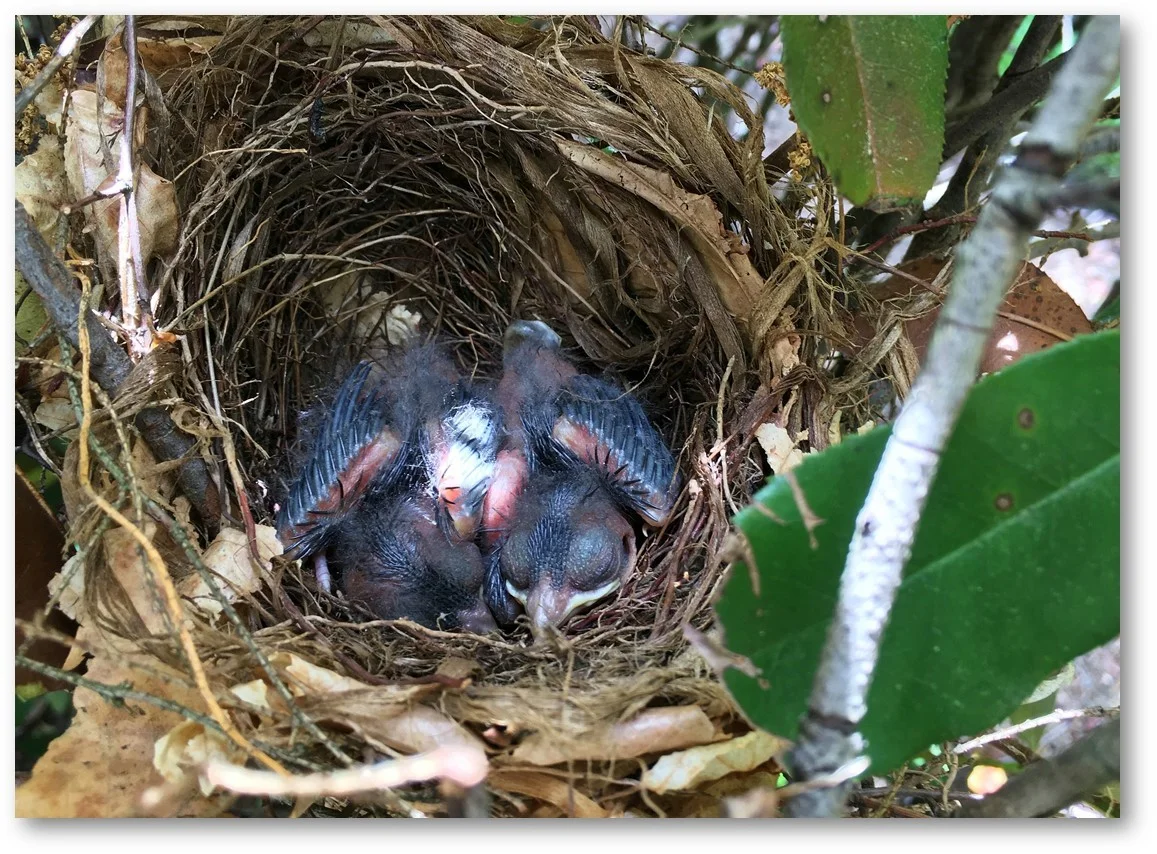We're all a Flutter
Cardinalis cardinalis nestlings at ESA
All of us at ESA love sharing our first glimpse of spring, from the first budding flower to the croak of a spring peeper. But few things evoke the merriment of spring like a nesting bird. This year, the birds have come to us!
Setophaga striata
Photo Source: Greg Lasley/VIREO http://www.audubon.org/bird-guide
A Blackpoll Warbler (Setophaga striata) was spotted right outside our office. A migrant in the Chesapeake Bay region, they winter in South America and breed in the boreal forests of Canada and Alaska. They only weight half an ounce and have one of the highest pitched songs of the bird species. In the fall, some fly directly from New England to Puerto Rico, averaging 1,800 miles over water with no stops. A flight that takes up to 88 hours, impressive!
Then, just outside two of our office windows, a mere 20 feet apart, settled a northern cardinal (Cardinalis cardinalis) family and an American robin (Turdus migratorius) family.
Cardinalis cardinalis nestlings at ESA
The northern cardinal is a native year-round resident to the eastern U.S. with both parents feeding their nestlings until they leave the nest about 9-11 days after hatching. The males will feed fledglings while females begin the next nesting attempt with about 2-3 broods per year. Males sing to defend nesting territory while females sing mainly in the spring before the start of nesting. Atypical for any bird, the female will occasionally sing on the nest, thought to be telling the male when to bring in food for the young. Since cardinals can live upward of 15 years we hope these nestlings live a long and adventurous life!
Turdus migratorius
Photo Source: Claude Nadeau/Vireo http://www.audubon.org/bird-guide
The American robin is common throughout North America where it varies its meals throughout the day. In the morning, they prefer earthworms and in the afternoon they prefer fruit. The entire population turns over on average every 6 years, but some can live to be almost 14 years old. We hope our nestlings will live longer than the average! We eagerly await a glimpse of the robin’s eggs and nestlings. If we’re able to capture a glimpse we will be sure to post it!




